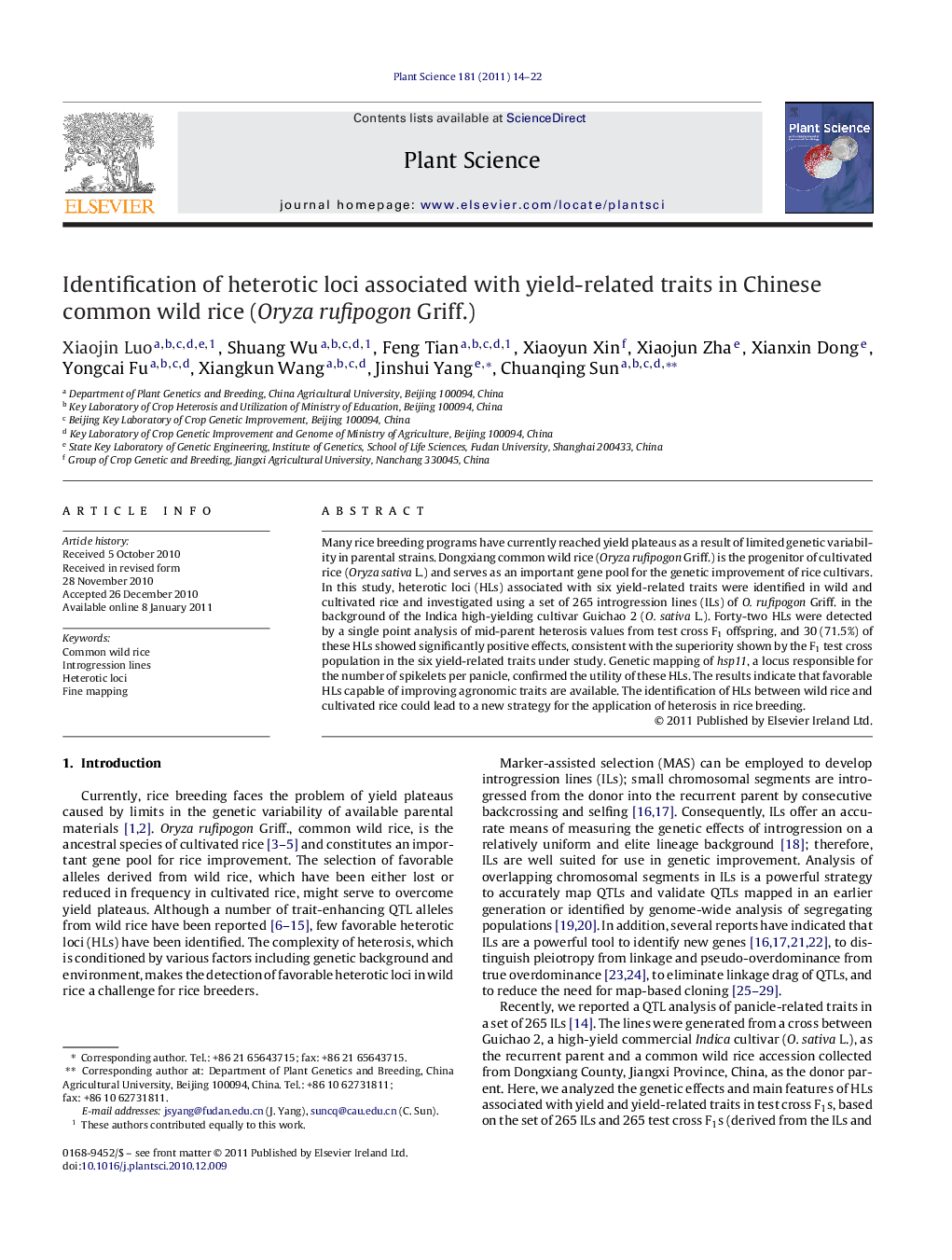| Article ID | Journal | Published Year | Pages | File Type |
|---|---|---|---|---|
| 2017829 | Plant Science | 2011 | 9 Pages |
Many rice breeding programs have currently reached yield plateaus as a result of limited genetic variability in parental strains. Dongxiang common wild rice (Oryza rufipogon Griff.) is the progenitor of cultivated rice (Oryza sativa L.) and serves as an important gene pool for the genetic improvement of rice cultivars. In this study, heterotic loci (HLs) associated with six yield-related traits were identified in wild and cultivated rice and investigated using a set of 265 introgression lines (ILs) of O. rufipogon Griff. in the background of the Indica high-yielding cultivar Guichao 2 (O. sativa L.). Forty-two HLs were detected by a single point analysis of mid-parent heterosis values from test cross F1 offspring, and 30 (71.5%) of these HLs showed significantly positive effects, consistent with the superiority shown by the F1 test cross population in the six yield-related traits under study. Genetic mapping of hsp11, a locus responsible for the number of spikelets per panicle, confirmed the utility of these HLs. The results indicate that favorable HLs capable of improving agronomic traits are available. The identification of HLs between wild rice and cultivated rice could lead to a new strategy for the application of heterosis in rice breeding.
► Identification heterotic loci from Chinese common wild rice (Oryza rufipogon Griff.) ► Fine mapping heterotic loci using nearly isogenic lines. ► Exploitation the favorable alleles of wild rice by constructing introgression lines.
